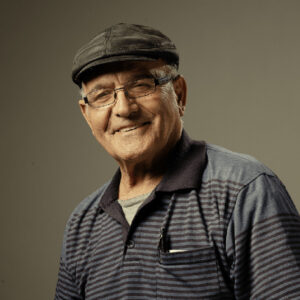- +972-4-676-3307
- +972-52-800-8485
- Fax +972-4-6762144
- Moshav Givat Yoav, Golan Heights 12946
תקיעה בשופר הינה מסורת עתיקת יומין. אך, היכן מוזכר השופר בתנ”ך? למה תוקעים בשופר? איך תוקעים בשופר? ואיך בימינו הוא קשור למסורת ישראל? כל התשובות לפניכם.
בימי קדם נהגו לתקוע בשופר בהזדמנויות רבות, מכיוון שהוא כלי נשיפה בעל צליל חזק שנשמע למרחקים. המצווה לשמוע את קול השופר מופיעה בתורה, והיא מאפיינת יותר מכול את ראש השנה. כפי שכתוב:
וּבַחֹדֶשׁ הַשְּׁבִיעִי בְּאֶחָד לַחֹדֶשׁ, מִקְרָא-קֹדֶשׁ יִהְיֶה לָכֶם--כָּל-מְלֶאכֶת עֲבֹדָה, לֹא תַעֲשׂוּ: יוֹם תְּרוּעָה, יִהְיֶה לָכֶם.
במדבר כט, א
השופר הוא כלי הנגינה שמוזכר בתנ”ך יותר מכל כלי אחר – 72 פעמים! הוא מופיע בהקשרים של פולחן וקדושה, המלכת מלכים ומנהיגים, יציאה למלחמה, כינוס של העם, גאולה, קבורה ועוד.
השופר מוזכר לראשונה בתורה במעמד הר סיני בזמן קבלת התורה מתואר איך קול השופר מלווה את האווירה המיוחדת והעוצמתית, ומעניק לה נופך מלא הוד ויראה:
וְהַר סִינַי, עָשַׁן כֻּלּוֹ, מִפְּנֵי אֲשֶׁר יָרַד עָלָיו יְהוָה, בָּאֵשׁ; וַיַּעַל עֲשָׁנוֹ כְּעֶשֶׁן הַכִּבְשָׁן, וַיֶּחֱרַד כָּל-הָהָר מְאֹד. וַיְהִי קוֹל הַשֹּׁפָר, הוֹלֵךְ וְחָזֵק מְאֹד; מֹשֶׁה יְדַבֵּר, וְהָאֱלֹהִים יַעֲנֶנּוּ בְקוֹל.
שמות יט, יח-יט
תיאור נוסף שמוכר לרבים מאיתנו מלימודי התורה בבית הספר היסודי, הוא בזמן כיבוש הארץ ע”י יהושוע ונפילת העיר יריחו – ביום השביעי למצור על יריחו, סבבו שבעה כוהנים שבע פעמים את חומות העיר בעודם תוקעים בשופרות:
וְהָיָה בִּמְשֹׁךְ בְּקֶרֶן הַיּוֹבֵל, כְּשָׁמְעֲכֶם אֶת-קוֹל הַשּׁוֹפָר, יָרִיעוּ כָל-הָעָם, תְּרוּעָה גְדוֹלָה; וְנָפְלָה חוֹמַת הָעִיר, תַּחְתֶּיהָ, וְעָלוּ הָעָם, אִישׁ נֶגְדּו.
יהושע ו, ה
כשדוד מעלה את ארון הברית לירושלים, כתוב:
וְדָוִד וְכָל-בֵּית יִשְׂרָאֵל, מַעֲלִים אֶת-אֲרוֹן יְהוָה, בִּתְרוּעָה, וּבְקוֹל שׁוֹפָר.
שמואל ב' ו,טו
תקיעה בשופר בזמן שבית המקדש היה קיים. היו תוקעים בשופר כל יום. אפילו היה מקום מיוחד שנקרא “בית התקיעה”, שהיה ממוקם בפינה שבין הכותל הדרומי והמערבי, כך שהשופר יוכל להישמע בכל העיר ובשדות הסמוכים.
גם על כניסת השבת היו מכריזים בסדרה של שש תקיעות:
אֵין פּוֹחֲתִין מֵעֶשְׂרִים וְאַחַת תְּקִיעוֹת בַּמִּקְדָּשׁ, וְאֵין מוֹסִיפִין עַל אַרְבָּעִים וּשְׁמוֹנֶה. בְּכָל יוֹם הָיוּ שָׁם עֶשְׂרִים וְאַחַת תְּקִיעוֹת (בַּמִּקְדָּשׁ)... וּבְעֶרֶב שַׁבָּת הָיוּ מוֹסִיפִין עוֹד שֵׁשׁ, שָׁלֹשׁ לְהַבְטִיל הָעָם מִמְּלָאכָה, וְשָׁלֹשׁ לְהַבְדִּיל בֵּין קֹדֶשׁ לְחֹל.
משנה סוכה ה, ה
מכאן גם נולד הביטוי “לשמש כשופר” – שפירושו לשמש כמודיע, ככרוז.
כשחרב בית המקדש, איבד השופר את תפקידו הציבורי ככרוז שמודיע על אירועים שונים, אך תפקידו הפולחני נשמר לקיום המצווה תקיעה בשופר כשר בראש השנה (מאוחר יותר תיקנו רבנן גם במוצאי יום הכיפורים). בחלק מהקהילות תוקעים בשופר גם בחודש אלול בזמן הסליחות ובתעניות.

רס”ג (רבי סעדיה גאון, 942-882), מגאוני בבל, ציין 10 טעמים ללמה תוקעים בשופר בראש השנה:
כָּל-יֹשְׁבֵי תֵבֵל, וְשֹׁכְנֵי אָרֶץ, כִּנְשֹׂא-נֵס הָרִים תִּרְאוּ, וְכִתְקֹעַ שׁוֹפָר תִּשְׁמָעוּ.
ישעיה יח, ג
הרמב”ם (רבי משה בן מימון, 1204-1135), מגדולי הפוסקים וההוגים, אמר שמעבר לזה שתקיעת שופר בראש השנה היא קיום מצווה, יש לה ערך מוסף של התעלות האדם:
עורו ישנים משנתכם, ונרדמים הקיצו מתרדמתכם, חפשו במעשיכם, חזרו בתשובה וזכרו בוראכם. אלו השוכחים את האמת בהבלי הזמן ושוגים כל שנתם בהבל וריק אשר לא יועיל ולא יציל, הביטו לנפשותיכם והטיבו דרכיכם ומעלליכם, ויעזוב כל אחד מכם את דרכו הרעה ומחשבתו אשר לא טובה
הלכות תשובה, פג, הד
תקיעה בשופר לפי המשנה, חייב אדם מישראל לשמוע בראש השנה תשעה קולות.
שלוש פעמים מוזכרת בתורה המילה “תרועה”, ובכל “תרועה” צריך שתבוא “תקיעה” (פשוטה) לפניה ואחריה, כלומר סדר התקיעות שלוש פעמים: תקיעה, תרועה, תקיעה (תר”ת) – תשעה קולות.
במאה הרביעית הוסיפו קול שלישי – שברים (שקולם נשמע כשל אנחה), כיוון שלא היו בטוחים מהם הקולות המדויקים וצירופם, וסך הכול תיקנו מתשעה קולות לשלושים.
לכן אנו תוקעים את כל הצירופים:
תרועה זו האמורה בתורה, נספק לנו בה ספק, לפי אורך השנים ורוב הגלות, ואין אנו יודעים היאך הוא: אם היא היללה שמייללות נשים ביניהן בעת שמייבבות, או האנחה בדרך שייאנח אדם, פעם אחר פעם, כשידאג לבו מדבר גדול, או שניהם כאחד. לכן אנו עושים הכול: היללה היא שאנו קוראים תרועה, והאנחה זו אחר זו היא שאנו קוראים אותה שלושה שברים. (שופר, ג, ב)
במהלך השנים הוסיפו ברוב העדות עוד שלושים קולות באמצע התפילה – למלכויות, לזיכרונות ולשופרות – סך הכול: תשעים!
ולסיום סיומת – משלימים עוד עשרה קולות עד מאה עגול.
מאז קום המדינה קיבל השופר מקום של כבוד בטקסים ובאירועים שונים בעלי אופי לאומי יהודי.

The Shofars at Kol Shofar are meticulously handcrafted in our family workshop, paying maximum attention to the highest level of quality, to Kashrut, ease of blowing, cleanliness and producing a special sound. Our customers say they can recognize our Shofars immediately anywhere in the world, due to our unique handprint.